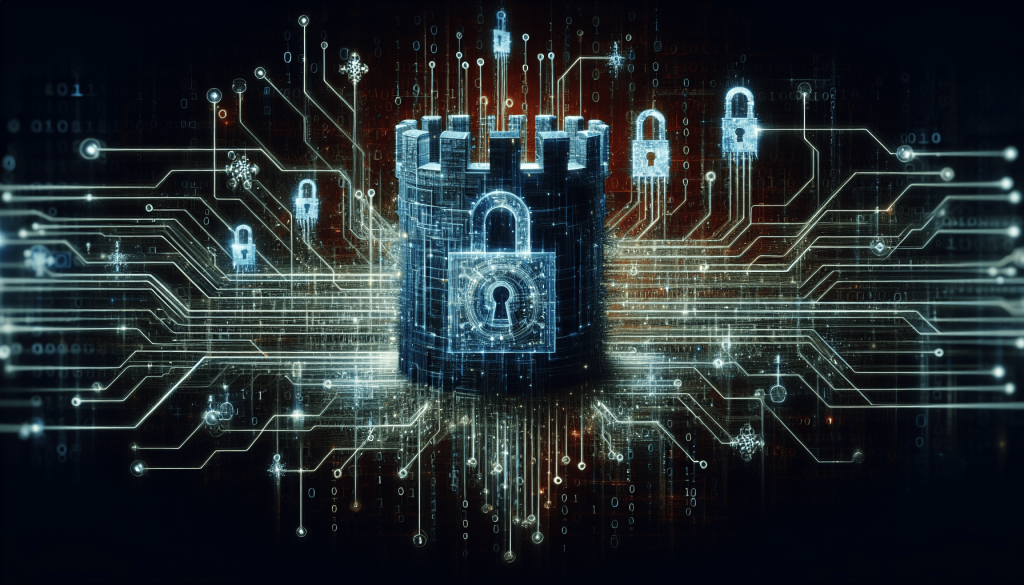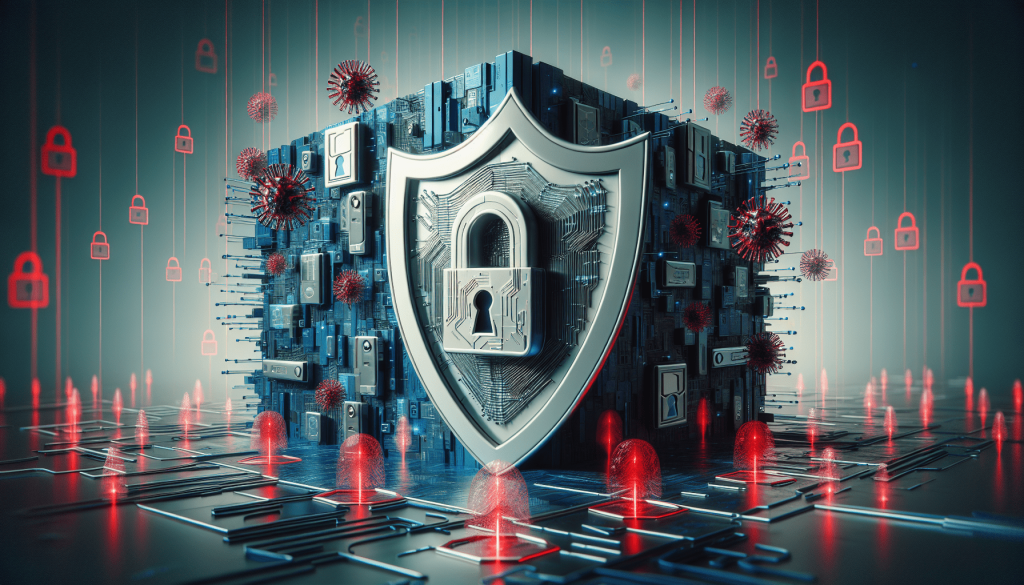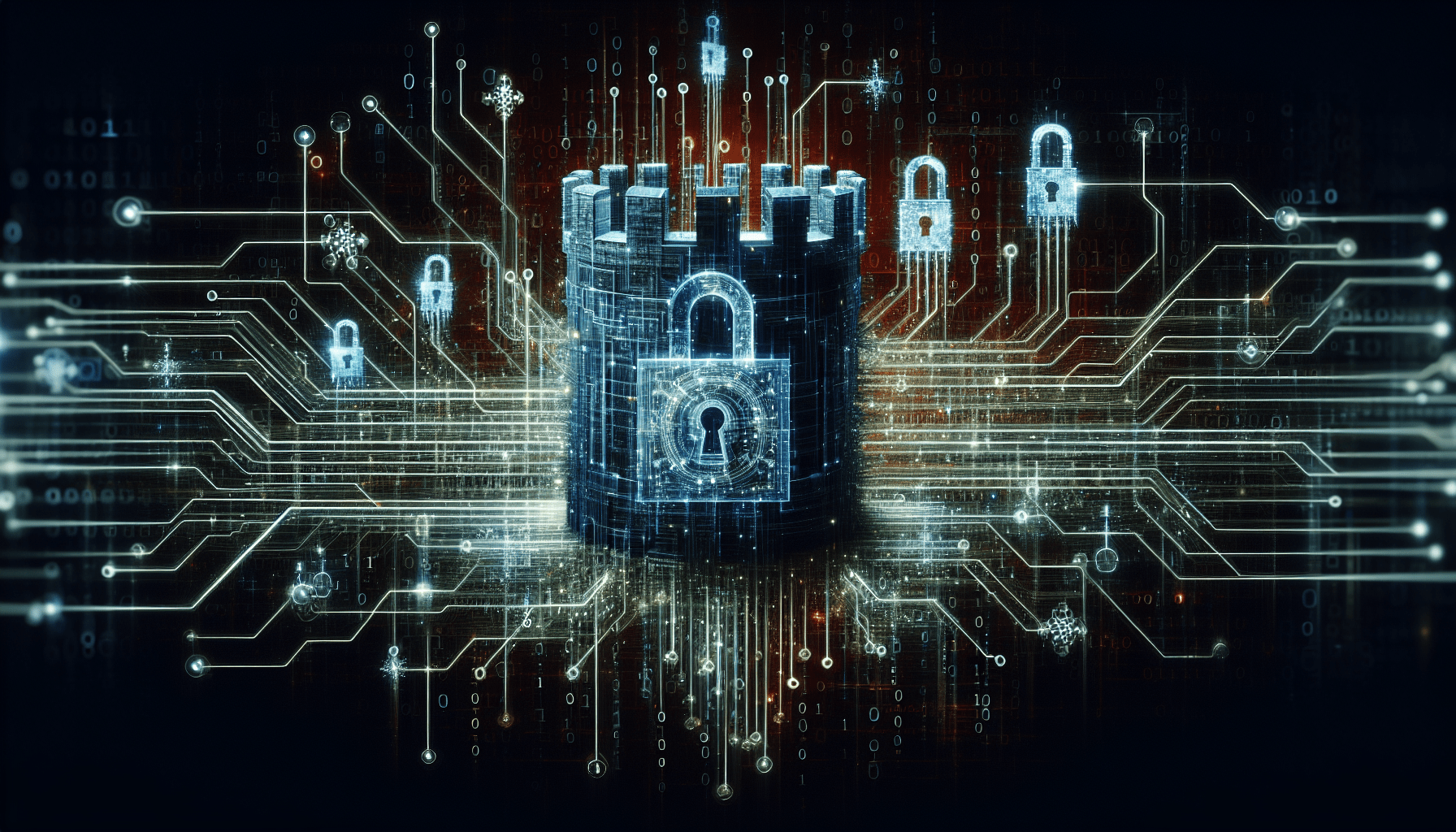You want to safeguard your network from cyber attacks, and we’re here to help! In this article, we will be sharing the top 10 ways to protect your network and keep it secure from potential threats. With an ever-increasing number of cyber attacks happening every day, it’s crucial to take the necessary measures to maintain the integrity of your network. By following these practical tips, you can fortify your network’s defences and ensure the safety of your valuable data.
Install a Firewall
Choose a reputable firewall software
Installing a firewall is an essential step in protecting your network from cyber attacks. A firewall acts as a barrier between your network and the outside world, monitoring and filtering incoming and outgoing network traffic. When choosing a firewall software, it is crucial to select a reputable and well-established provider. Look for software that is known for its reliability, effectiveness, and regular updates.
Configure your firewall settings properly
After installing a firewall, it is essential to configure its settings properly. The default settings may not provide the level of protection needed for your specific network. Take the time to understand and customize the settings according to your network’s requirements. This includes defining rules and policies to block or allow specific types of traffic, such as web browsing, email, or file transfers. By properly configuring your firewall, you can maximize its effectiveness in protecting your network.
Regularly update your firewall software
Once you have installed and configured your firewall, it is crucial to regularly update the software. Firewall providers release updates to address newly discovered vulnerabilities and improve the software’s performance. By keeping your firewall software up to date, you can ensure that your network is protected against the latest threats. Set up automatic updates if possible or establish a regular schedule to manually check for updates. This simple step can make a significant difference in maintaining the security of your network.
Use Strong Passwords
Create unique and complex passwords
Using strong passwords is one of the most basic yet crucial aspects of network security. Weak passwords are easy targets for cybercriminals to gain unauthorized access to your network. When creating passwords, make sure they are unique and complex. Avoid using common words, names, or personal information that may be easily guessed. Instead, use a combination of uppercase and lowercase letters, numbers, and special characters. The longer and more complex your password, the more secure it will be.
Regularly change your passwords
While creating strong passwords is important, it is equally essential to regularly change them. Regularly changing passwords helps protect your network from any potential breaches. Set a schedule to update passwords for all important accounts and systems at least every three months. Additionally, if you suspect any unauthorized access or if an employee leaves your organization, it is crucial to change the corresponding passwords immediately.
Implement multi-factor authentication
To further enhance the security of your network, consider implementing multi-factor authentication (MFA) wherever possible. MFA adds an extra layer of protection by requiring users to provide additional verification, such as a biometric scan or a unique code sent to their mobile device, in addition to their password. This significantly reduces the risk of unauthorized access, as even if a password is compromised, the attacker would still need the additional authentication factor to gain entry.

Keep Software Updated
Regularly update operating systems
Updating your operating systems is vital for network security. Operating system updates often include important security patches that address vulnerabilities that cybercriminals can exploit. Enable automatic updates for your operating systems, or regularly check for updates and install them promptly. Outdated operating systems are more susceptible to cyber attacks, so staying up to date is essential.
Update all software applications
In addition to operating systems, it is crucial to update all software applications running on your network. Cybercriminals often target known vulnerabilities in software to gain unauthorized access. Software providers release updates and patches to fix these vulnerabilities and improve performance. Regularly check for updates for all software applications used in your network environment and install them in a timely manner.
Enable automatic software updates
To ensure that your network is always protected with the latest security patches, enable automatic software updates wherever possible. By allowing software to update automatically, you eliminate the risk of missing critical updates or forgetting to install them manually. This ongoing maintenance ensures that your network is equipped with the most up-to-date defenses against cyber threats.
Educate Employees
Raise awareness about cybersecurity threats
Educating employees about cybersecurity threats is a proactive measure to protect your network. Make sure your employees are aware of the various types of cyber attacks, such as phishing, malware, and social engineering. Regularly communicate the importance of network security and the impact of their actions on the overall security posture of the organization. By raising awareness, employees can become more vigilant and proactive in identifying and reporting potential security risks.
Train employees on safe browsing habits
Safe browsing habits are crucial in preventing cyber attacks. Conduct training sessions to educate employees on safe browsing practices, such as avoiding suspicious websites, not clicking on unknown links or email attachments, and keeping their personal and work accounts separate. Provide practical examples and real-life scenarios to help employees understand the potential risks and consequences of unsafe browsing habits. A well-informed and cautious staff can significantly reduce the likelihood of network breaches.
Teach employees to recognize phishing attempts
Phishing attacks are a common method used by cybercriminals to gain unauthorized access to networks. Train employees to identify and report phishing attempts. Teach them to be wary of suspicious emails, especially those requesting sensitive information, urging urgent action, or coming from unknown senders. Encourage employees to verify the legitimacy of emails with IT or the relevant department before providing any sensitive information. By equipping employees with phishing awareness, your network becomes more resilient against this prevalent attack vector.

Implement Access Controls
Create user accounts with appropriate access levels
Implementing access controls ensures that users only have access to the resources and information necessary for their roles. Create user accounts for employees with appropriate access levels, limiting privileges to essential functions. By enforcing the principle of least privilege, you reduce the potential impact of a breach or unauthorized access. Regularly review user access levels and update them as needed, ensuring that permissions align with job responsibilities.
Employ strong authentication methods
Alongside access controls, employ strong authentication methods to verify user identities. This includes the use of complex passwords, multi-factor authentication (MFA), or biometric authentication. MFA, as mentioned earlier, adds an extra layer of security by requiring users to provide multiple verification factors before gaining access. By implementing strong authentication methods, you enhance the overall security of your network and reduce the risk of unauthorized access.
Regularly review and revoke access permissions
Continuously reviewing and revoking access permissions is essential for network security. Regularly assess the access privileges granted to users, removing any unnecessary permissions or accounts of employees who have left the organization. This prevents former employees or unauthorized individuals from accessing sensitive information or systems. By maintaining an up-to-date record of access permissions, you can ensure that only authorized individuals have access to the network.
Backup Important Data
Regularly backup important files and data
Regularly backing up important files and data is crucial in protecting against data loss and potential cyber attacks. Create a backup schedule that includes all critical information and ensure that backups are performed regularly. It is advisable to have multiple backups stored in different locations to protect against physical damage or theft. Consider using cloud storage or an off-site backup solution to ensure the safety and accessibility of your backups.
Use secure storage for backups
When backing up your data, it is important to use secure storage options. Encrypt your backups to protect them from unauthorized access. Choose reputable storage providers that offer strong data protection measures. Storing backups in a secure location, whether physical or virtual, adds an extra layer of protection, ensuring that your valuable data remains safe and accessible when needed.
Test the reliability of your backups
Regularly testing the reliability of your backups is essential to ensure that your data can be recovered in the event of a disaster or cyber attack. Perform periodic test restores to ensure that your backups are functioning correctly and that your data can be fully recovered. By regularly testing your backups, you can identify and address any issues before a critical situation arises, providing peace of mind and protection for your network.
Secure Wi-Fi Networks
Change default router usernames and passwords
Securing your Wi-Fi network is crucial to prevent unauthorized access to your network. One of the first steps is changing the default usernames and passwords of your routers and access points. Default credentials are often widely known and can be easily exploited by attackers. Choose strong and unique passwords for your Wi-Fi devices, ensuring that they are not easily guessable or related to personal information.
Use encryption for your Wi-Fi network
Encryption plays a vital role in securing your Wi-Fi network. Set up your wireless access points to use strong encryption protocols, such as Wi-Fi Protected Access 2 (WPA2) or the latest WPA3. Encryption scrambles the data transmitted over your network, making it difficult for attackers to intercept and decipher. Using encryption ensures that only authorized users can access your network, enhancing its overall security.
Disable remote management and guest networks
To further secure your Wi-Fi network, disable remote management and guest networks if they are not necessary. Remote management capabilities can provide an entry point for attackers, so it is recommended to disable this feature unless required for specific network management purposes. Guest networks, while convenient for visitors, can also present potential security risks. If not needed, it is advised to disable guest networks to reduce the attack surface of your network.
Implement Anti-Malware Measures
Install reputable anti-malware software
Protecting your network against malware is crucial in preventing cyber attacks. Install reputable anti-malware software on all devices connected to your network. Choose software from trusted providers known for their effectiveness in detecting and removing malware. The software should include real-time scanning capabilities, automatic updates, and a robust quarantine system. Combined with regular updates, anti-malware software provides a strong defense against malicious software.
Regularly scan and update anti-malware software
Installing anti-malware software is not enough; it is essential to regularly scan and update it. Schedule regular scans of all devices to detect and remove any potential malware infections. Keep the software up to date by allowing it to receive automatic updates or manually checking for updates. Regular scans and updates ensure that your network remains protected against the ever-evolving threat landscape of malware.
Educate employees on avoiding malware infections
While anti-malware software is effective, employee awareness and caution are equally important in preventing malware infections. Educate your employees on the risks associated with downloading suspicious files or clicking on unknown links. Encourage them to avoid visiting potentially harmful websites or opening email attachments from unknown sources. Regularly communicate best practices and provide examples of common malware infection vectors. By fostering a culture of vigilance, you can significantly reduce the risk of malware infiltrating your network.
Monitor Network Activity
Implement real-time network monitoring tools
Implementing real-time network monitoring tools is crucial for detecting and responding to cyber attacks promptly. These tools provide visibility into network traffic, enabling the identification of abnormal or suspicious activities. Network monitoring tools can detect unusual patterns, unauthorized access attempts, or data exfiltration. Invest in reputable monitoring software that offers real-time alerts and allows for proactive threat response.
Regularly review logs and alerts
Monitoring network logs and alerts helps identify potential security incidents or areas of vulnerability. Regularly review and analyze logs generated by your network devices, operating systems, and security systems. Look for any unusual or suspicious activities that may indicate a breach or an attempt to compromise your network. Analyzing logs and alerts allows you to take swift action and implement appropriate countermeasures to protect your network.
Detect and respond to suspicious activities
Detecting and responding to suspicious activities is essential in preventing cyber attacks from causing significant damage. Establish protocols and response procedures to follow when suspicious activities are detected. Define roles and responsibilities for incident response, ensuring that responsible individuals are promptly notified and can take appropriate actions. By effectively detecting and responding to suspicious activities, you can mitigate potential threats and protect the integrity of your network.
Create an Incident Response Plan
Develop a detailed incident response plan
Creating an incident response plan is essential in effectively responding to cyber attacks. Develop a detailed plan that outlines the steps to be taken in the event of a security incident. This plan should include protocols for identifying, containing, and mitigating the impact of an incident. It should also cover communication channels, roles and responsibilities, and the involvement of external parties if needed. By having a well-defined incident response plan, you can minimize downtime, limit the impact of a breach, and facilitate a quick recovery.
Designate responsible individuals and roles
Designating responsible individuals and roles is key to successful incident response. Clearly identify the individuals who will be responsible for coordinating the response efforts, communicating with stakeholders, and implementing remediation measures. This ensures that there is a centralized and organized approach to handling security incidents. Assigning specific roles helps streamline the incident response process and avoids confusion or delays in taking necessary actions.
Regularly test and update the plan
Creating an incident response plan is not a one-time task; it requires regular testing and updating. Conduct periodic drills and simulations to test the effectiveness of your plan. Identify any gaps, areas for improvement, or changes in the threat landscape that may necessitate updates to the plan. Regularly review and refine your incident response plan based on lessons learned from previous incidents or emerging security trends. A tested and updated plan ensures that your organization is prepared to respond effectively to cyber attacks.
In conclusion, safeguarding your network from cyber attacks requires a multi-layered approach encompassing various aspects of network security. Installing a reputable firewall, using strong passwords, keeping software updated, educating employees, implementing access controls, backing up important data, securing Wi-Fi networks, employing anti-malware measures, monitoring network activity, and creating an incident response plan are essential steps in protecting your network. By following these recommendations and staying vigilant, you can build a robust defense against cyber attacks and safeguard the integrity of your network.
